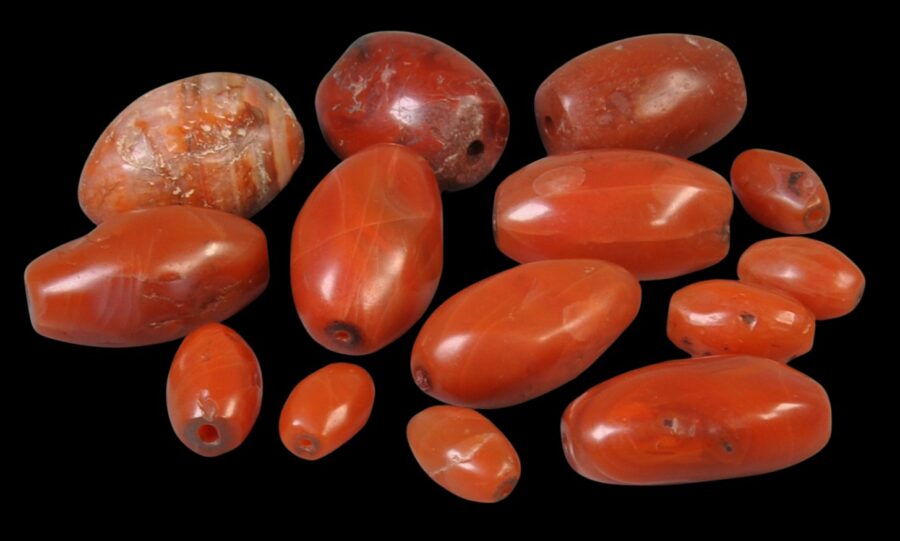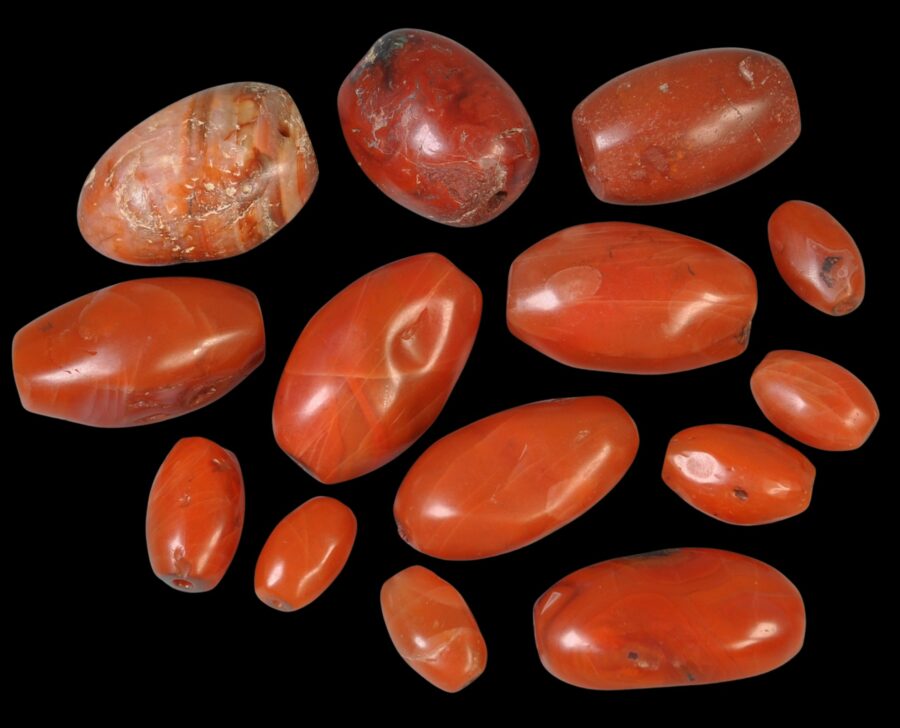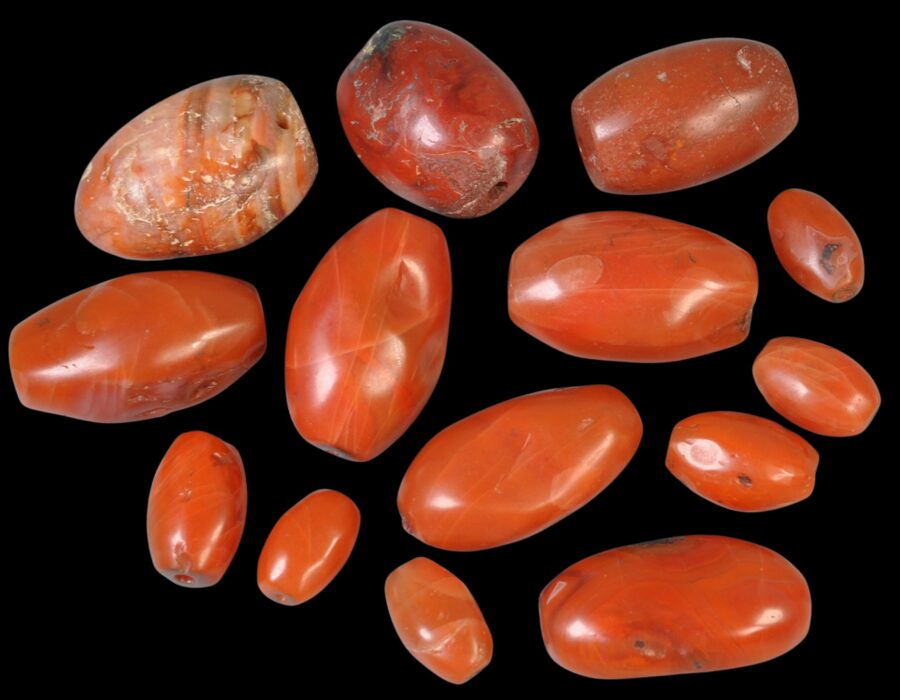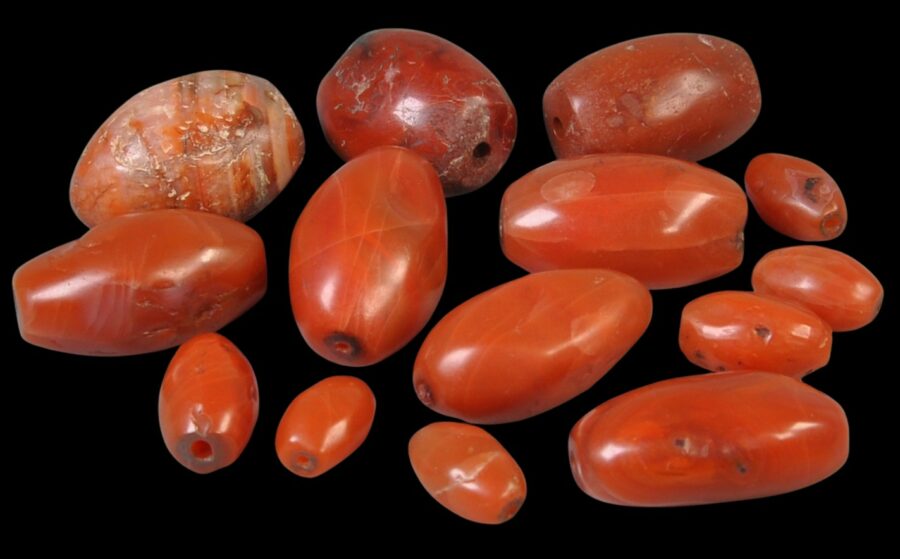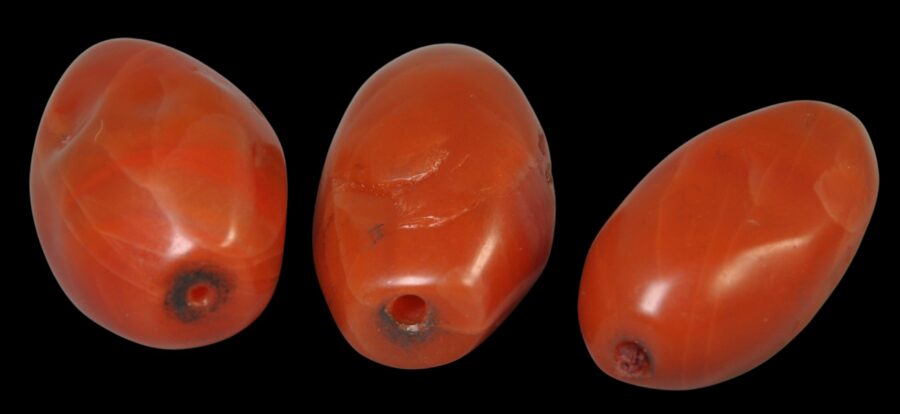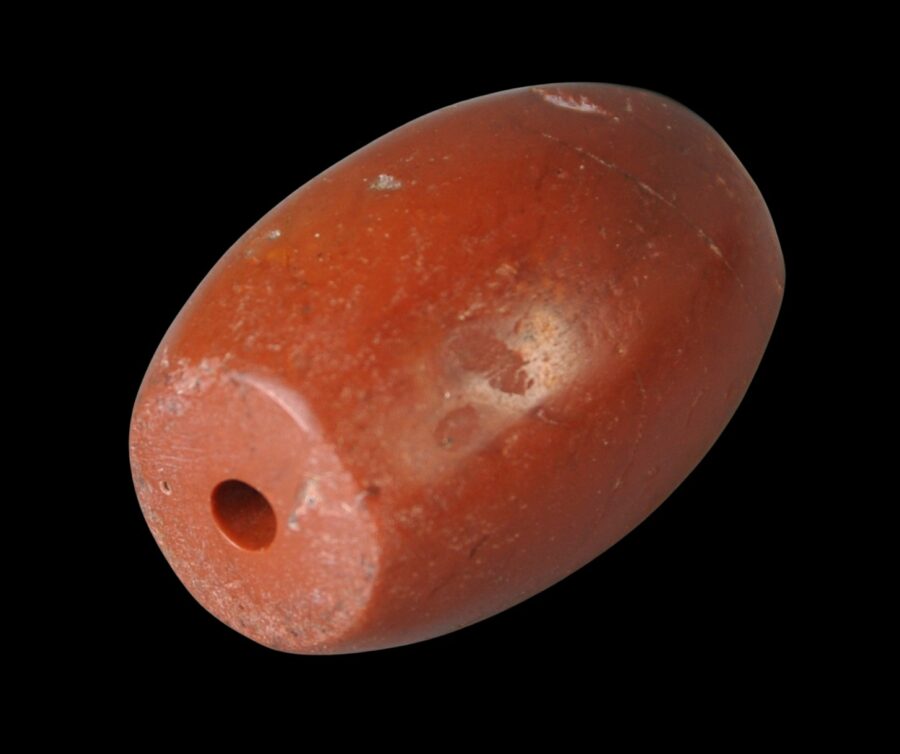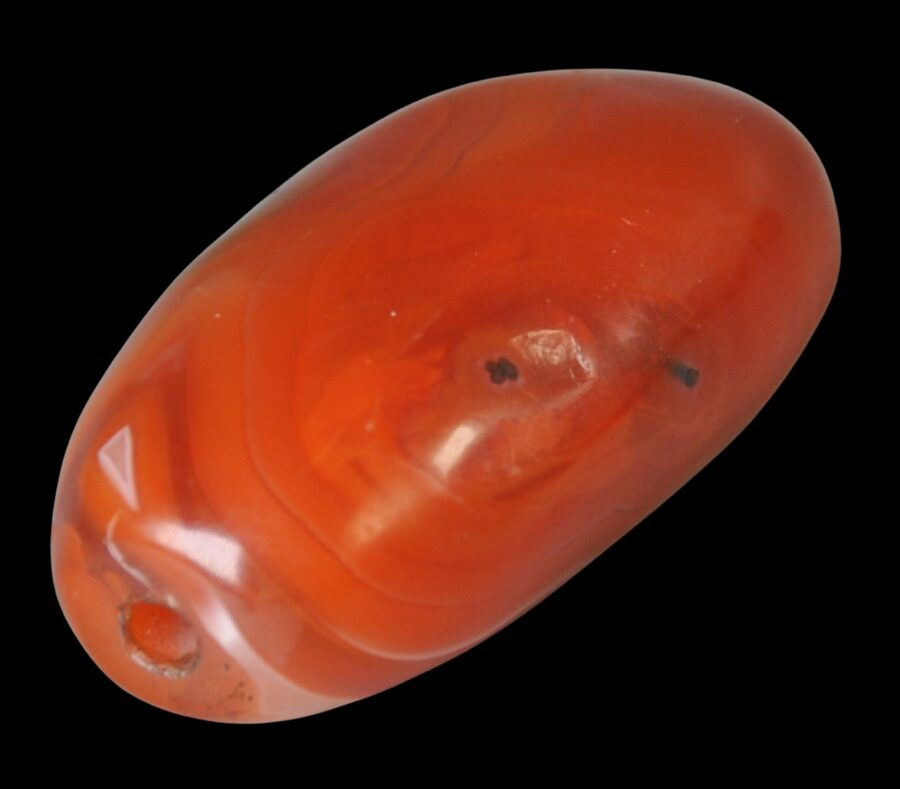Carnelian or orange-coloured agate was known to the Tibetans as pema raka (also spelt pemma raka), and was among the most prized materials for beads similar to carved agate dzi beads.
Genuine pema raka beads were believed by Tibetans to be ancient though it is more probable that genuine old examples date to around the 15th-16th century.
This collection of fourteen Tibetan carnelian or agate beads is notable for the unusually large size of the larger beads, the softened contours from handling signifying great age, and the clarity of their colour. Each has a smooth, ‘oily’ surface consistent with much prayer and ritual use. Indeed, the beads were believed to have talismanic or protective properties and it is likely that many were worn in the hair.
Each is barrel shaped, some with flattened sides, and each with a hand-drilled hole for threading. There is good wear around each hole, again suggesting significant age. The holes are relatively wide consistent with the beads being used in the hair.
Each is opaque and has a superb orange colour with light white crystalline banding, which is important when it comes to genuine pema raka beads. It is believed that the raw agate used to make the beads originate in Yunnan and was imported to Tibet from there.
This is an excellent collection of these beads, of unusual age and quality. The collection includes some unusually large beads of a size that are difficult to find.
References
Liu, R.K., A Universal Aesthetic: Collectible Beads, Ornament, Inc, 1995.


